Related Research Articles

Intrigue and Love, sometimes Love and Intrigue, Love and Politics, or Luise Miller is a five-act play written by the German dramatist Friedrich Schiller. His third play, it was first performed on 13 April 1784 at Schauspiel Frankfurt. The play shows how cabals and their intrigue destroy the love between Ferdinand von Walter, a nobleman's son, and Luise Miller, daughter of a middle-class musician.

Gertrude Welcker was a German stage and silent film actress. She appeared in 64 films between 1917 and 1925.
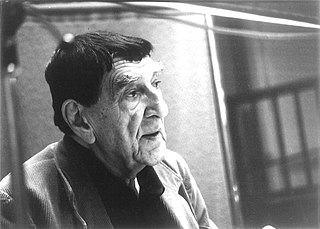
Wolf Kaiser was a German theatre and film actor. He grew up in Switzerland, where he studied chemistry and physiology. In 1937 he was deemed unfit for service in the Wehrmacht, and then went to Berlin where he trained as an actor.
Misled Youth or Youth Gone Astray is a 1929 German silent drama film directed by Richard Löwenbein and starring Fritz Alberti, Erna Morena, and Dolly Davis. It was one of a number of enlightenment films during the Weimar Era that addressed the issue of juvenile delinquency. The film's art direction was by Hans Jacoby.
The False Prince is a 1927 German silent film directed by Heinz Paul and starring Harry Domela, Ekkehard Arendt and John Mylong. It was shot at the Johannisthal Studios in Berlin. The film's art direction was by Karl Machus. The film was based on Domela's book recounting his own adventures in post-First World War Germany when he briefly masqueraded as Prince.
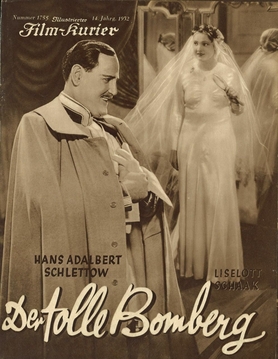
The Mad Bomberg is a 1932 German comedy film directed by Georg Asagaroff and starring Hans Adalbert Schlettow, Liselotte Schaak, and Paul Heidemann. It is an adaptation of the 1923 novel The Mad Bomberg by Josef Winckler, which was later made into a 1957 film of the same title. The film's art direction was by Otto Erdmann and Hans Sohnle.
Whom the Gods Love is a 1942 Austrian historical musical film directed by Karl Hartl and starring Hans Holt, Irene von Meyendorff, and Winnie Markus. The film is a biopic of the Austrian composer Wolfgang Amadeus Mozart. It was made as a co-production between the giant German studio UFA and Wien-Film which had been set up following the German annexation of Austria. The film was part of a wider attempt by the Nazis to portray Mozart as an authentic German hero. Like many German biopics of the war years, it portrays the composer as a pioneering visionary.

My Leopold is a 1955 West German comedy film directed by Géza von Bolváry and starring Paul Hörbiger, Peer Schmidt, and Ingeborg Körner. It is based on Adolphe L'Arronge's 1873 play of the same name which has been turned into a number of films. It was shot at the Tempelhof Studios in West Berlin. The film's sets were designed by the art director Hans Kuhnert.

Vacation from Marriage is a 1927 German silent comedy film directed by Victor Janson and starring Harry Halm, Lilian Harvey and Jutta Jol.

Struggle for the Soil is a 1925 German silent film directed by Erich Waschneck and starring Gustav Oberg, Ferdinand von Alten, and Oskar Marion. It is based on the classic novel From My Farming Days by Fritz Reuter.

The Old Fritz is a 1928 German silent historical drama film directed by Gerhard Lamprecht and starring Otto Gebühr, Julia Serda and Bertold Reissig. Part of the cycle of Prussian Films, it was released in two parts. Gebühr played the role of Frederick the Great on many occasions during the Weimar Republic and Nazi Germany.

Fire in the Opera House is a 1930 German drama film directed by Carl Froelich and starring Alexa Engström, Gustav Fröhlich and Gustaf Gründgens. A separate French-language version La barcarolle d'amour was also produced. It was shot at the Babelsberg Studios in Berlin. The film's sets were designed by the art director Franz Schroedter.

Imperial and Royal Field Marshal is a 1956 Austrian historical comedy film directed by E. W. Emo and starring Rudolf Vogel, Gretl Schörg, and Mady Rahl.

Goetz von Berlichingen is a 1955 Austrian historical adventure film directed by Alfred Stöger and starring Ewald Balser, Auguste Pünkösdy and Raoul Aslan. It is a filmed version of the 1773 play Götz von Berlichingen by Johann Wolfgang von Goethe. It was shot at the Burgtheater in Vienna.
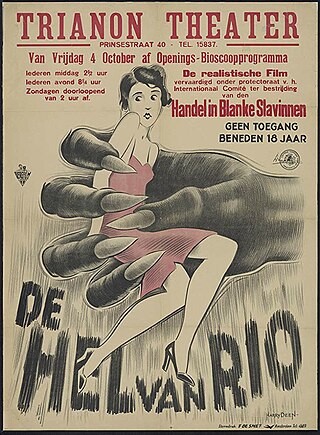
The Bordello in Rio or The Women's House of Rio is a 1927 silent drama film directed by Hans Steinhoff and starring Vivian Gibson, Albert Steinrück and Hans Stüwe. It was based on a novel by Norbert Jacques which was remade twice as Blondes for Export (1950) and Final Destination: Red Lantern (1960). In the United States, the film was re-edited by Bud Pollard and released as Girls for Sale.
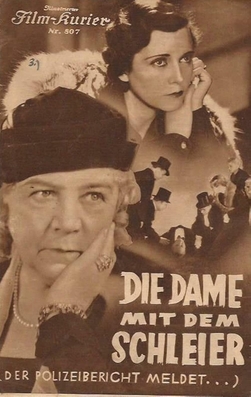
Police Report is a 1934 German mystery crime film directed by Georg Jacoby and starring Olga Chekhova, Paul Otto and Hansi Niese. It was adapted from the 1932 novel Die Frau im schwarzen Schleier by Hedda Lindne.

Woe to Him Who Loves is a 1951 West German musical comedy film directed by Sándor Szlatinay and starring Gretl Schörg, Wolf Albach-Retty and Hubert von Meyerinck. It was shot at the Wandsbek Studios in Hamburg. The film's sets were designed by the art director Herbert Kirchhoff.
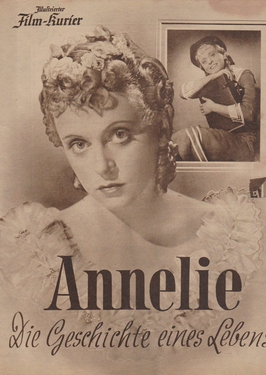
Annelie is a 1941 German historical comedy drama film directed by Josef von Báky and starring Luise Ullrich, Werner Krauss and Käthe Haack. It was shot at the Babelsberg and Tempelhof Studios in Berlin and on location around Königsberg in East Prussia. The film's sets were designed by the art director Emil Hasler. It was based on a play of the same title by Walter Lieck. It was screened at the 1941 Venice Film Festival.
References
- ↑ Goble p. 483